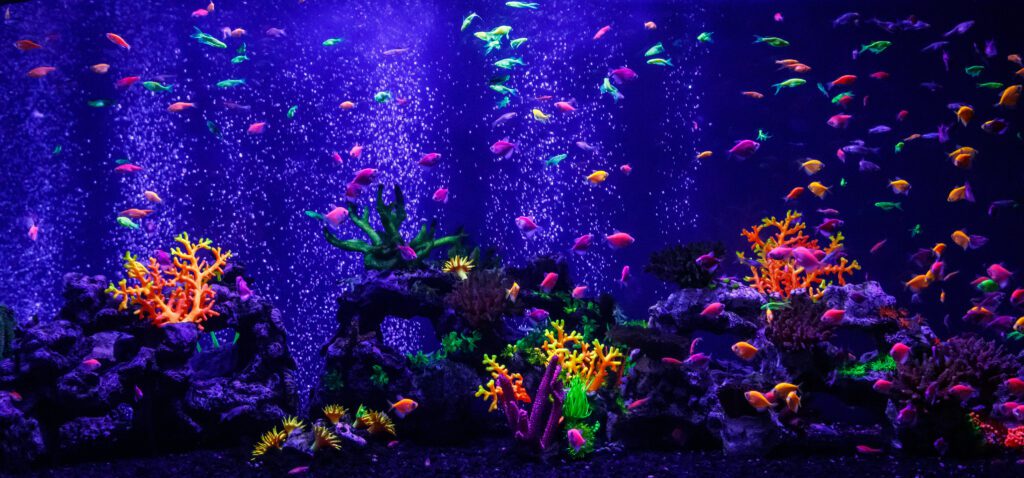
Are you thinking about adding a fish tank to your environment? Good, because there are many reasons to do so. Fish tanks not only add to the aesthetics of any home or office, but there are many therapeutic benefits. Watching fish swim can help reduce stress. Their care provides an activity and hobby that you can engage in while you learn about their biology and ecosystems. You also can connect with other fish enthusiasts in your area and online who share your interest so it opens up new social opportunities. But before you go out and buy a tank and start blindly filling it up with fish, here’s a basic guide to the care of tropical fish.
Choosing the Right Aquarium
Tropical fish are a popular choice for aquarium enthusiasts due to their vibrant colors and diverse species. But proper care is essential for maintaining a healthy environment for these aquatic pets. This centers on creating the right environment and that starts with the choice of tank. A tank size of at least 20 gallons is recommended for beginners, as larger tanks are more stable in terms of water quality. Before selecting the tank, consider the type of fish you want. Some species require more space, while others thrive in smaller groups so select accordingly.
Saltwater vs Freshwater
As a beginner, you may want to go with freshwater fish. Most tropical fish sold today are freshwater and they tend to be much hardier and less expensive. Saltwater aquariums require a little more expertise that you may want to grow into down the road.
Water Quality
No, water isn’t just water. Untreated tap water kills tropical fish, thus various treatments must be mixed into the water for fish to survive. Maintaining optimal water quality is fundamental to fish health. Tropical fish typically thrive in warm water, usually between 74°F and 78°F (23°C to 26°C). Invest in a reliable heater and thermometer to monitor the temperature consistently.
Regular water testing also monitors key parameters include pH, ammonia, nitrates, and nitrites. Invest in a quality water testing kit to ensure these levels remain within the appropriate range.
Filtration

A quality filtration system is necessary for removing toxins and keeping water clean. Choose a filter appropriate for your tank size and the requirements of your particular fish. A combination of mechanical, biological, and chemical filtration is recommended for optimal water quality.
Food
Research the best nutrition for your specific fish. Select a high-quality, species-appropriate diet and pay careful attention to the recommended feeding amount. Overfeeding is unhealthy and can lead to poor water quality with increased waste. A variety of diets are available at pet stores and you should be able to find the perfect match.
Maintenance
Regular maintenance is key to a healthy aquarium. Clean the tank and decorations as needed, and monitor equipment such as heaters and filters to ensure everything functions correctly.
Fish Selection
When selecting fish, compatibility is critical. Research which species can mix safely and peacefully, as some fish are territorial or aggressive and will kill each other. A well-chosen selection of compatible fish will flourish in their new home.
Observation
Finally, always observe your fish for signs of stress or illness. Early detection of problems can prevent more significant issues. Look for changes in food consumption or physical appearance. Many vets treat exotic pets including fish.
With these basics you should be able to begin creating your own vibrant and healthy environment for tropical fish, ensuring they thrive and bring joy and calm to your home. Happy fishkeeping!